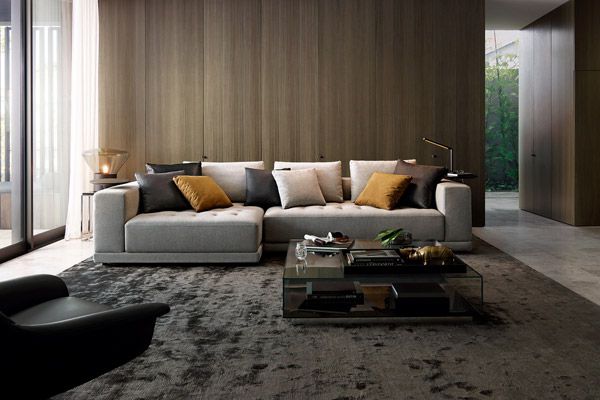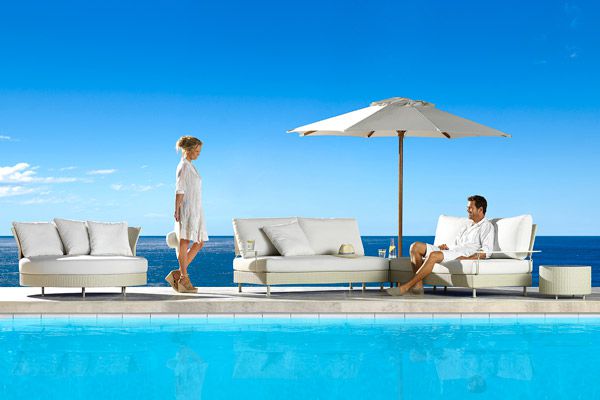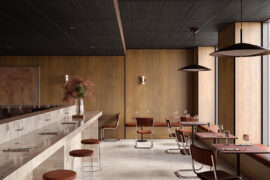For Australian brand, King Living, which started out as King Furniture in 1977, it has been a journey of continual evolution. And while the word Furniture has simply replaced Living on the otherwise original logo, there’s a lot more to this soft rebrand story.

August 20th, 2015
It was humble beginnings for King Furniture. The clearly entrepreneurial members of the King clan made original foam furniture from their home base and initially hawked their wares to receptive customers at Sydney’s Paddy’s markets. Fast-forward some 38 years and the still family-owned, Australian business has 14 showrooms nationally plus two recent international openings (Singapore and New Zealand), an ever-expanding product portfolio and an in-house Sydney based design team that’s grown to six staff.
Renata Bayer-Volf, King Living general manager says the “soft rebrand” which was rolled out across all consumer touch points from March 2015, reflects what the business has been doing and working towards for a number of years. “The name King Living better represents who we are as a business today, building in lifestyle and design benefits from room to room.”
The rebrand conveys as much about “the growth of the business into a brand that now designs and manufactures a broader range of furniture solutions for the home” as it does about being attuned to market opportunities and customer wants.
Bayer-Volf says that because “customer needs are always changing and evolving” – to stay relevant – it’s “absolutely” essential for their design and furniture manufacturing business to adapt and evolve “on demand and with quick turnaround.”
At the same time, the company has stayed true to designing and making contemporary furniture with a signature King quality. That’s evidenced in thoughtful design features, crafted manufacture and the use of exclusive fabrics, leathers, finishes and features.
King has a strong history of introducing new product designs and creating expanded stories within their sofa ranges. More recently they’ve addressed direct inquiry from consumers and designers wanting the same King quality and design aesthetic for furniture beyond the lounge room.

Felix sofa by King Living integrates technology.
King Living’s first foray outside of sofa designs was an outdoor version of the “iconic” Delta interior range in 2011. And in the bedroom, the launch of Neo Bed followed the success of Neo Modular Sofa in 2013. It was something of a return to beds for King, having dabbled in waterbed design and making in the 80s. King Living has also engaged leading Australian designers to design products, such as the William Sofa designed by Charles Wilson.
Increasingly King’s designers “look at the whole home and how we like to live and relax when considering new product concepts,” says Bayer-Volf, so the furniture carries a consistent design language from the lounge/living and dining spaces to outdoor entertaining areas and into the bedroom.

Delta Outdoor range by King Living, previously King Furniture.
The business has also been on the front foot of innovatively integrating technology into furniture. “Our designers are tuned in and we want to be different,” Bayer-Volf emphasises. One example is the recently launched King Cloud II (the consummate chill-out recliner lounge) which features integrated TouchGlide® control technology – allowing the end-user to adjust to their preferred seating position with a hand swipe. Another is the Smart Charging Table for convenient couch-side charging of devices –which fits into King’s Smart Pocket in a variety of their sofas.
As for the level of planning and research that underscores each new step, Bayer-Volf says, “we’re always looking at what the market is seeking and demanding and then we do our own thing.” Ultimately it’s the intuitive feeling that “people will love it.”
King Living
kingliving.com.au
See the latest release by King Furniture, the Zaza Sofa by Charles Wilson.
INDESIGN is on instagram
Follow @indesignlive
A searchable and comprehensive guide for specifying leading products and their suppliers
Keep up to date with the latest and greatest from our industry BFF's!

London-based design duo Raw Edges have joined forces with Established & Sons and Tongue & Groove to introduce Wall to Wall – a hand-stained, “living collection” that transforms parquet flooring into a canvas of colour, pattern, and possibility.

Curated by the Indesign editorial team and hosted at leading showrooms, the Design Discussions series provided thoughtful reflection and debate on key issues shaping the industry.

Australian designed and manufactured, Laminex Architectural Panels transform timber design aesthetics with cutting-edge technology
The internet never sleeps! Here's the stuff you might have missed

Jesse Lockhart-Krause, Director of Lockhart-Krause Architects, tells us about a storied building in Queensland that has now become a functional workplace for a therapy centre.

Emily Moss, Brooke Lloyd, Juliette Arent Squadrito and Alexandra Ramundi joined Alice Blackwood at Living Edge’s stunning showroom to discuss a milestone approach to design.